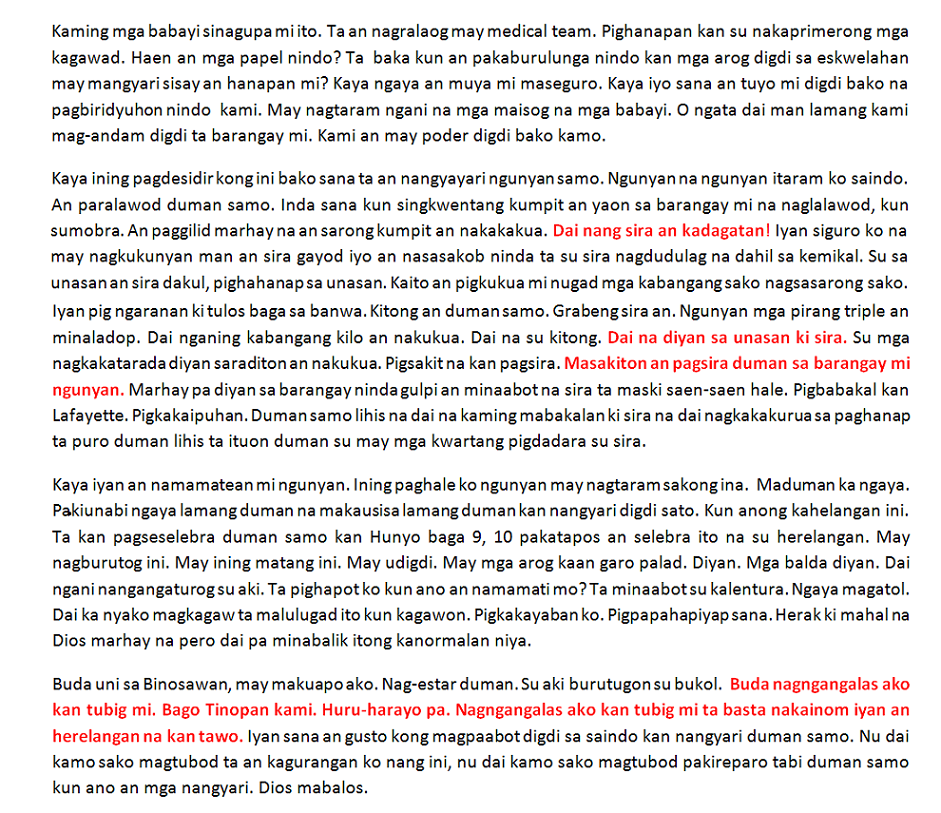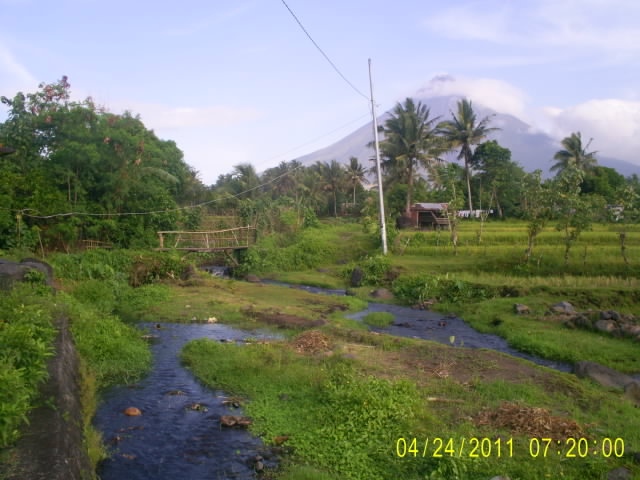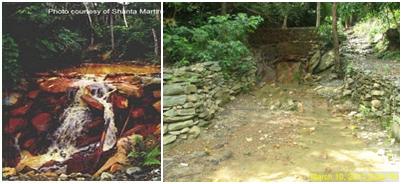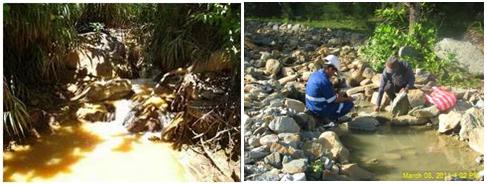Conference Paper on Mining
Mining in the Philippines is meant for foreign demand to natural resources. Under the Mining Act of 1995, foreign mining companies are allowed 100% repatriation of capital. Resources extracted in the Philippines are never used for domestic consumption.
There are currently 33 large to medium-scale mines and 2,000 quarries and small scale mines in operation in the Philippines. The large to medium-scale mines are broken down into the following: 1 Copper-Gold-Silver-Zinc mine, 3 Copper and Gold mines, 4 medium-scale Chromite mines, 5 medium-scale Nickel mines, 4 medium-scale gold mines, 15 cement plant and quarries, 1 nickel processing plant and 1 copper smelter.
In the pipeline are 23 more mining projectsii broken down into the following: 11 copper mines, 6 more gold mines, 5 additional nickel mines and 1 cement mine. There are also ongoing 41 exploration projects for additional mining sites, with 12 on copper and gold, 24 on gold, 3 nickel 1 bauxite and 1 sulfur.
According to the National Statistics Office Labor Force Survey (October 2007), out of the total 33,671,000 employed persons, 0.4% are found in the Mining and Quarrying Industry. In actual numbers, there are 134, 684 workers under the Mining and Quarrying industry, with no significant increase compared to October of 2006. There are also estimates about the number of small-scale miners which can be between 200,000 to 500,000.
Occupational Health and Safety Issues
The latest official government data regarding occupational accidents covered the year 2003. The study noted a total of 58,720 cases of occupational injuries, with 35,454 leading to no loss in workdays while 23,265 resulted in lost workdays. Out of the 23, 265 cases resulting in lost workdays, 170 were fatal, while 23, 095 were non-fatal.
In the mining and quarrying sector (MQS), there were a total of 156 reported cases of occupational injuries in 2003, with 96 cases leading to no lost workdays while 60 lead to lost workdays. Of the 60, 5 cases were fatal, with 55 being non-fatal.
It is noteworthy to compare the percentage of fatal accidents in the MQS with the the total employed in the said sector. Out of the total 170 fatal accidents in 2003, 5 came from the MQS, which is equivalent to 3% of the total fatal accidents occurring. Despite a mere 0.4% of the total employed in 2003 came from the MQS, its share of fatalities were as high as 3%.
Sadly, the numbers are increasing. In the second half of 2007 alone, we have already monitored 11 cases of death of miners. Last August 13, 2007, 2 miners died of suffocation in Tuba, Benguet. A day after, in Mankayan, Benguet, 2 more miners died after the tunnel they were in collapsed. After 2 weeks, in August 27, 2007, another 2 miners died after inhaling poisonous gas in Itogon, Benguet. Benguet is a mining area in the island of Luzon north of Manila.
In the island of Mindanao, 5 miners were buried alive last November 19, 2007 in Magsaysay, Placer, Surigao del Norte. The island of Mindanao is catering to many mining firms since it is rich in mineral deposits.
But this is just the tip of the iceberg. Collected data is very partial since it only comes from newspaper reports and majority mining operation occur in far-flung areas where most news agencies do not bother to cover. Also, the reported cases involves fatalities and we are still to see a more comprehensive database which includes the various occupational diseases being suffered by miners. But with a more comprehensive data collection, we can only expect figures to go up.
Mining and the color of politics
Any individual who seriously want to fathom how mining operations in the Philippines affects the lives of workers must appreciate the bigger picture and go beyond the boundaries of the mines. One must earnestly listen to the mixture of sound created by the surrounding the community and the rumbling of the big mine machines, else one fail in grasping the realities.
The past years have seen mining slowly grow in its contribution to the gross domestic production (GDP) figures. Compared to the other sectors, MQS in the 2nd quarter of 2007 grew by 33%, the fastest among all sectors. From its total contribution to the economy in 2006 of a mere 0.1%, in 2007 it jumped to 0.66%.
But where there is mining, there is also strong opposition from the community. A fact-finding mission last year cited one of the many reason behind strong community opposition to mining is that despite areas being declared as watersheds, mining application for this areas were still approved, contrary to international guidelines.
In Rapu-Rapu Island, Albay, in the Bicol region south of Manila, communities have been campaigning for the closure of Rapu-Rapu Polymetallic Mining Project operated by the Australian company Lafayette Mining Limited since 2001. But their campaign for its closure hit another milestone after the residents of blamed mining operation for the massive fish kill which struck at least five barangays after heavy rains on October 28, 2007.
In another province, the local government were also opposing expansion of mining operations. Last December 2007, after a mining conference held in Palawan province, Palawan Governor Joel T. Reyes declared a mining moratorium in the Mt. Mantalingahan Range, the region's last remaining contiguous forest bloc. Palawan is located southwest of Manila.
In Tuba, Benguet, indigenous communities are contesting permit-to-operate given to Philex Mining Corporation. The Kalanguya tribe is asserting there should be no mining operation unless the mining firm secure a free, prior, and informed consent (FPIC) as provided by the Indigenous Peoples Rights Act of 1997 (IPRA).
Last October, 2007, workers of the Sagittarius Mines, Incorporated (SMI) paralyzed the firms operations by padlocking the main office and setting-up road blocks. The main reason for the action of the workers is the violation of the company of labor laws, where after 6 months of being employed, a workers should become regular. According to the union, more than 200 workers who have been employees of SMI for nearly 3 years now are still not regular workers.
There is also an increasing armed opposition to mining. Last January 1, 2008, police in South Cotabato reported that around 40 suspected New People's Army (NPA) members entered the base camp of SMI, in Barangay Tablu, Tampakan, South Cotabato at around 3 a.m and burned the base camp's administration building, quarters and offices of the United Pacific Drilling Corporation. The next day, the NPA admitted they were indeed behind the attack. This is the not first time in recent history that a mining site was attacked by armed groups operating in the country and it will not be the last.
Mining areas have been transformed into military garrison because of strong opposition, both legal and illegal, to their continued operations. There are even reports of companies hiring foreign security consultants to secure mine sites. This has transformed mining areas into conflict zones.
Opportunities to amplify Health and Safety issues
Amidst the myriad of issues surrounding mining, occupational health and safety (OHS) must be addressed alongside the rest of the concerns. Indeed, the issue of environmental degradation and the impact to the lives of the community are crucial issues and the media tends to follow events related to this, while OHS seems to take a back seat.
To counter this inertia, more work should be put into amplifying OHS issues in mining. Alongside the scrambling of mining companies for limited natural resources, efforts from workers, unions and OHS advocates should be as brisk as ever. For IOHSAD, we have made the mining industry one of our major focus for years 2008-2010.
OHS surveillance must increase among mining sites and a more comprehensive monitoring program should be put in place. Aside from trained individuals monitoring OHS issues of this sector, we should train the workers and miners to develop comprehensive surveys of their mine site.
We should also increase the coverage of our own networks beyond workers, unions and medical workers. It is imperative to include community organizations, environmental organizations, local government units and the media to our network. We must reach out to them and make them aware that just like the rest of the community, miners face great risk, every minute for at least 8 hours a day, 6 days a week.
We must also make the miners aware the risk of unbridled mining to the community and the environment and that mining should support and contribute to the well-rounded development of the society and not for the fattening of pockets of a few. With a strong synergy among the stakeholders, we can make an impact on OHS in mining.
































































































































No comments:
Post a Comment